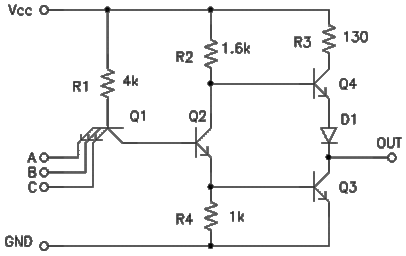A "1-way 8-bit" gate would need to have out[8] so that each of the 1-way gates would have an output.
In the hardware world, you often see one-input Nand and Nor gates used in place of Nots. This reflects that electrically the gates are almost identical. This is a schematic diagram for a TTL 3-input Nand gate:

The only difference between this gate and a 2-input Nand and a Not is the number of emitters in transistor Q1 on the left. Remove the B and C inputs and the emitters connected to them and you get a Not.
--Mark